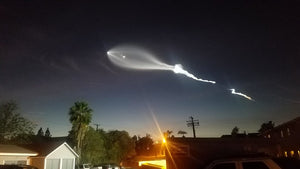Planet Watching, M39 and Gamma Delphini
Planet Watch
While Mars has now disappeared within the Sun’s glare, the remaining four naked-eye planets are visible in the evening sky this month. Mercury moves through Virgo and can be observed low over the western horizon for most of September. It reaches elongation on the 14th, while a thin crescent Moon appears nearby on the 8th. Venus continues to shine after sunset and passes close to Spica on the 5th and is then joined by the Moon on the 9th. Both Saturn and Jupiter continue to rule the night, rising before sunset and then dropping below the horizon a few hours before sunrise. The nearly full Moon passes the pair on the 16th and 17th. Distant Neptune reaches opposition on the 14th and is visible throughout the entire night while Uranus can be observed from late evening to the early hours of the morning. Finally, the new Moon is on the 6th and then full on the 20th.
M39
Messier 39, an open star cluster located in the direction of the Cygnus constellation. Because of its proximity to Deneb and its size – it is actually larger in the night sky than a full Moon – it is easily observed using binoculars and small, low magnification telescopes.
Binoculars show an elongated patch with three or four stars stretched across the middle. Telescopically, a low-powered eyepiece shows a large, sparsely scattered triangular cluster of about 30 bright blue-white stars, with a conspicuous double at the center. A multitude of fainter background stars can also be seen, but these stars can overwhelm the cluster with larger scopes at higher powers.
M39 may seem like a boring target at first, but just one hour of imaging is enough to have a wonderful looking photo. The stars pop out really easily, the background is filled with smaller ones, and the processing is simple. This is a fantastic object for sharpening astrophotography skills.

Gamma Delphini
Gamma Delphini is a well-known and celebrated double star, quite a gem in the late-summer sky. A low magnification of around 30x is enough to split this star into its pale gold and white components.








